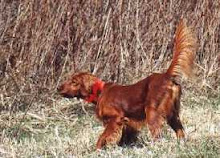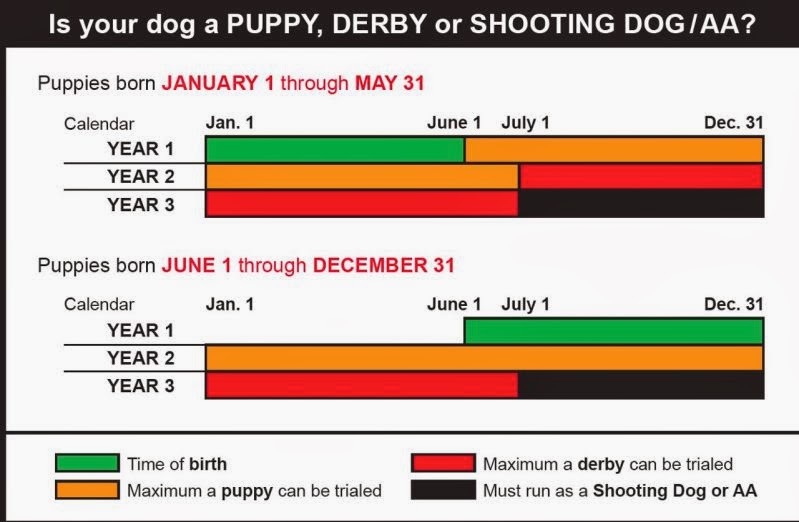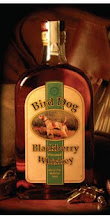Friday, February 29, 2008
Thursday, February 28, 2008
California trials...

Tuesday, February 26, 2008
Roosevelt speaks...
 "No one but he who has partaken thereof can understand the keen delight of hunting in lonely lands. For him is the joy of the horse well ridden and the rifle well held,; for him the long days of toil and hardship, resolutely endured, and crowned at the end with triumph. In after years there shall come forever to his mind the memory of endless prairies shimmering in the bright sun; of vast snow-clad wastes lying desolate under gray skies; of the melancholy marshes; of the rush of mighty rivers; of the breath of the evergreen forest in summer; of the crooning of ice-armored pines at the touch of the winds of winter; of cataracts roaring between hoary mountain masses; of all the innumerable sights and sounds of the wilderness; of its immensity and mystery; and of the silences that brood in its still depths."
"No one but he who has partaken thereof can understand the keen delight of hunting in lonely lands. For him is the joy of the horse well ridden and the rifle well held,; for him the long days of toil and hardship, resolutely endured, and crowned at the end with triumph. In after years there shall come forever to his mind the memory of endless prairies shimmering in the bright sun; of vast snow-clad wastes lying desolate under gray skies; of the melancholy marshes; of the rush of mighty rivers; of the breath of the evergreen forest in summer; of the crooning of ice-armored pines at the touch of the winds of winter; of cataracts roaring between hoary mountain masses; of all the innumerable sights and sounds of the wilderness; of its immensity and mystery; and of the silences that brood in its still depths."
-Theodore Roosevelt, The Wilderness Hunter, 1893
 Anyone who has run the open prairies, the Allegheny woodlands, the piney woods of the south, or the wetlands of the coastal regions knows what Roosevelt felt... it's bigger than words can describe, and it certainly makes life worth living... were Roosevelt alive today, there is no doubt in my mind that we would have a string of pointers or setters in the back of the White House, a flushing whip hanging on the wall, and a tucker saddle in the horse trailer... heck, I suspect he'd even have a red setter or two, just for hunting those tough spots... now, wouldn't that be nice??
Anyone who has run the open prairies, the Allegheny woodlands, the piney woods of the south, or the wetlands of the coastal regions knows what Roosevelt felt... it's bigger than words can describe, and it certainly makes life worth living... were Roosevelt alive today, there is no doubt in my mind that we would have a string of pointers or setters in the back of the White House, a flushing whip hanging on the wall, and a tucker saddle in the horse trailer... heck, I suspect he'd even have a red setter or two, just for hunting those tough spots... now, wouldn't that be nice??

Monday, February 25, 2008
Reflections of a President...
- Jimmy Carter, An Outdoor Journal: Adventures and Reflections, 1988.
Sunday, February 24, 2008
Breeding working dogs...

"NEVER UNDERESTIMATE THE IMPORTANCE OF WORKING QUALITY IN YOUR BROOD BITCHES. JUDGE A SIRE ONLY BY HIS GET."

Joe Edwards of Come Back Red Setters (shown here with his red setter Champion Come Back Audie) is a true working breeder. All the points noted above? That's Joe Edwards. He doesn't play... he works hard with his dogs and his breeding program. Joe doesn't just "talk the talk"... he "walks the walk." Guess what? Joe Edwards has produced more red setter champions than any other single breeder in the United States. And by the way... he's never run a Junior Hunt test, and he's never produced a "bench champion." Go figure... how'd he do it?? How about 40+ years of effort.
Friday, February 22, 2008
A dog on the edge...
I like a dog on the "edge"... that dog that is under control, but "just barely"... that dog that hits the edges up front, and hangs on to those edges, but "just barely... a dog that sticks his birds, and you're thrashing to get that bird up, thinking, that damn dog is quivering like a banshee, and hanging on, but "just barely... when you have a dog like that, you've got yourself a serious bird dog. That's what Charlie Turner has with Montana's Full House. Congratulations to Charlie, to and to Tim Hammons, who handled "Montana" to a first place finish in the Amateur All-Age stake of the Kentucky Field Trial Association. And, just to keep the white dogs humble, Tim also handled his big running red setter Code Red to a second place finish in the Amateur Shooting Dog stake. Code Red is no slouch either, as the reporter noted that "Code Red had two finds and a big race, at times a little wild, having to be roped in by his handler occasionally." Just barely.
Tuesday, February 19, 2008
Red setters in Sweden...

Thursday, February 14, 2008
Wednesday, February 13, 2008
CELTIC'S WOODLAND SUNRISE
 Red setter club member Loren Spiotta-DiMare sent these two scans of her red setter Celtic’s Woodland Sunrise. The portrait was a surprise birthday gift from Jerilyn Weber, a professional animal artist and good friend. Loren says "it really was a complete surprise and the painting is superb." She also sent an actual picture of "Woody"... as Loren said, Jerilyn sure did capture the smart looks and intensity of this fine looking red setter! Great work Jerilyn Weber... I'm sure this portrait is hanging in a special place in Loren's home.
Red setter club member Loren Spiotta-DiMare sent these two scans of her red setter Celtic’s Woodland Sunrise. The portrait was a surprise birthday gift from Jerilyn Weber, a professional animal artist and good friend. Loren says "it really was a complete surprise and the painting is superb." She also sent an actual picture of "Woody"... as Loren said, Jerilyn sure did capture the smart looks and intensity of this fine looking red setter! Great work Jerilyn Weber... I'm sure this portrait is hanging in a special place in Loren's home. If you would like to see more of Jerilyn’s work, visit her website at
If you would like to see more of Jerilyn’s work, visit her website atMonday, February 11, 2008
Color blindness...

A Little BIt of History...
"up until the last brace of the Championship, it looked as though the judges would have to name a dog that had the least mistakes, and of that we were not too proud. But, as so often happens, along comes one dog that helps pull the chestnuts out of the fire. Askew's Carolina Lady was named the winner, but not a champion. Lady, is not a fast dog, is very merry; her tail is always busy and high and most of the time she carries her head high, searching for body-scent; at times, though, she will lower her head and work on foot-scent. You can overlook this when you see her go boldly to her bird and swell up, head and tail high, every muscle acquiver with anticipation, a beautiful sight to a bird dog man and particularly so to a red setter enthusiast. " Lady was owned and handled by Ned LeGrande.
Also winning that October 17 1953 day on Kelly's Island were the following...

Askew's Carolina Lady
Sunday, February 3, 2008
IF DOGS ARE EQUAL TO HUMANS...
From the website...
"As for ‘equal rights’ with humans, this is problematic on many levels. I’ll say right now that I treat my dogs as well as, or better than I treat myself, so I’m not one of those ‘I can do whatever I want’ types.
1. If dogs are equal to humans, then I presume euthanasia in the case of extreme suffering or terminal illness would be disallowed?
2. If dogs are equal to humans, then I presume this would overturn Ohio’s various ‘breed’ (race) bans?
3. If dogs are equal to humans then they surely cannot be sterilized without informed consent?
4. If dogs are equal to humans, then any barriers to their entry into businesses, public places, etc, would be nullified?
5. If dogs are equal to humans, then they are entitled to subsidized healthcare (in Canada, don’t know about various states but since dogs are impecunious they would likely qualify for medicare).
6. If dogs are equal to humans, they the should not be leashed or confined against their will and cannot be considered to be at large when out enjoying themselves, so there goes the pound.
7. If dogs are equal to humans then they should be free to choose their human families and friends.
8. If dogs are equal to humans, then they don’t require licences, microchips or tattoos - as free and equal citizens they should be recognized on their own recognizance.
9. If dogs are equal to humans, must they be paid for any work they perform and is there a minimum wage? Where would these wages accrue, in trust funds set up for their progeny?"
I'm wondering if my dogs will be able to file for unemployment compensation during the off-hunting/trialing season. Actually, if this works out, I might be able to quit my job, and let my dogs support me by "going on the system." Can they apply for "dog food stamps?" What about subsidized housing? Reduced lunches at "obedience school? But what about the ligitation over the forced marriages? We might be in trouble there...
Saturday, February 2, 2008
Words of Wisdom from Ireland...

FTCh Sheantullagh Godswalk
Ray O'Dwyer, Owner/handler







